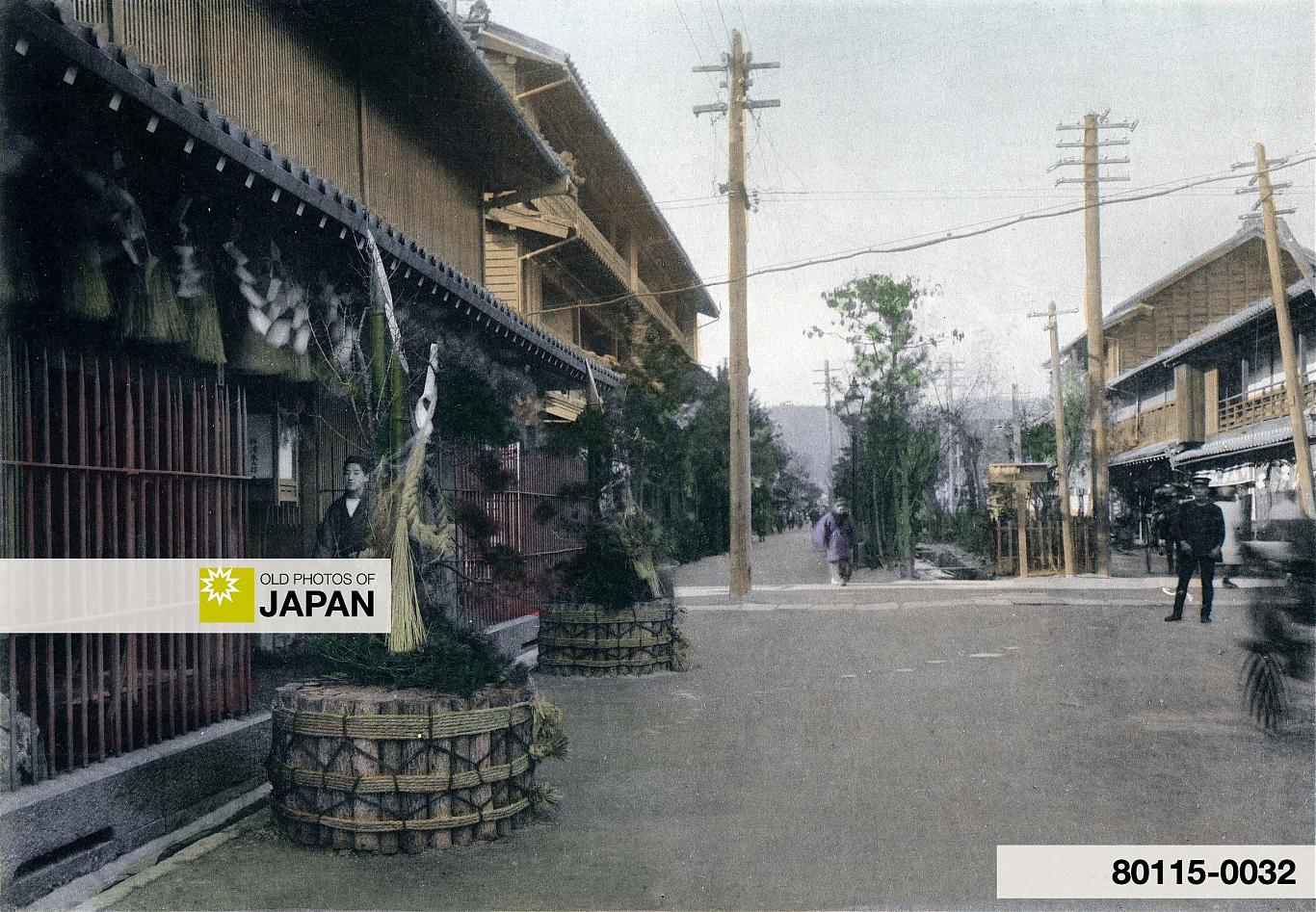Kadomatsu (door pine) is a decoration for Japanese New Year. They are displayed next to the entrance during the first week of the year.
The pine represents continuity, the bamboo straightness and sincerity. Kadomatsu can be seen all over Japan, except near Ikuta Jinja in Kobe. Reportedly because the kami of the shrine showed his dislike of kadomatsu by washing the ones near the shrine away during a flood in the eighth century.
This image is part of The New Year in Japan, a book published by Kobe-based photographer Kozaburo Tamamura in 1906. Original text1:
It is barely daylight, and already the people are emerging from their homes, to inhale the fresh air of a New Year (and winter, in Japan, is but a kind of cold summer, so far as blue skies is concerned), and to pay complimentary visits (a veritable boredom to many level-minded people) to folk they greet thus but once a year! Please observe the bamboo decorations in front of each dwelling.
The location appears to be Fukuhara, Kobe’s famed prostitution quarter.
See all New Year images on Old Photos of Japan.
Notes
1 Tamamura, Kozaburo (1906). The New Year in Japan. Tamamura Shashinkan.
Published
Updated
Reader Supported
Old Photos of Japan aims to be your personal museum for Japan's visual heritage and to bring the experiences of everyday life in old Japan to you.
To enhance our understanding of Japanese culture and society I track down, acquire, archive, and research images of everyday life, and give them context.
I share what I have found for free on this site, without ads or selling your data.
Your support helps me to continue doing so, and ensures that this exceptional visual heritage will not be lost and forgotten.
Thank you,
Kjeld Duits
Reference for Citations
Duits, Kjeld (). Kobe, 1906: New Year Celebrations 8, OLD PHOTOS of JAPAN. Retrieved on October 31, 2025 (GMT) from https://www.oldphotosjapan.com/photos/675/new-year-celebrations-8




There are currently no comments on this article.